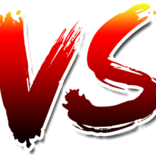The internet is often compared to an iceberg. The surface web, which we use daily for searches, emails, and social media, represents only a fraction of what lies beneath. The rest is submerged in the deep and enigmatic waters of the “dark web.” This article aims to shed light on what the dark web is, its structure, and the nuances surrounding its usage.
Understanding the Dark Web:
The term “dark web” refers to a hidden part of the internet that is not indexed by conventional search engines like Google or accessible through typical web browsers. It is intentionally obscured and requires specific software to access. This hidden layer comprises several components:
1. The Deep Web:
- The deep web encompasses all web content not indexed by search engines. It includes databases, academic resources, government archives, and more.
- Many deep web sites require authentication or are behind paywalls, making them inaccessible to the general public.
2. The Darknet:
- The darknet is a small portion of the dark web, accessible only through specialized networks like Tor (The Onion Router).
- Tor encrypts and routes internet traffic through a series of volunteer-operated servers, making it extremely difficult to trace users and the websites they visit.
3. Dark Web Marketplaces:
- Dark web marketplaces are e-commerce platforms where users can buy and sell goods and services, often using cryptocurrencies for anonymity.
- While some legal products are available, many marketplaces host illegal goods, including drugs, stolen data, and cybercrime tools.
Accessing the Dark Web:
Accessing the dark web requires specific tools and precautions:
1. Tor Browser:
- The Tor Browser is the most common way to access the dark web. It routes your internet traffic through the Tor network, allowing you to visit .onion websites.
- Download the Tor Browser from the official website (https://www.torproject.org/) and follow the setup instructions.
2. VPN (Optional):
- While using Tor already provides a high level of anonymity, some users opt for an additional layer of protection by using a Virtual Private Network (VPN) before connecting to Tor.
3. Caution and Legal Compliance:
- The dark web contains illegal content, and accessing it doesn’t exempt you from legal consequences.
- Exercise caution, avoid clicking on suspicious links, and be aware of potential scams and dangers.
The Dual Nature of the Dark Web:
The dark web is often portrayed as a realm of cybercriminals and illegal activities, but it also serves legitimate purposes:
1. Privacy Advocacy: The dark web can be a refuge for activists, journalists, and whistleblowers in countries with oppressive regimes, allowing them to communicate and share information securely.
2. Research and Exploration: Some researchers use the dark web to study cybercrime, security vulnerabilities, and emerging threats, contributing to a safer internet.
The dark web remains a mysterious and controversial part of the internet, both a hub for illicit activities and a sanctuary for those seeking privacy and anonymity. Accessing the dark web comes with significant risks and ethical considerations. It’s essential to tread cautiously and responsibly if you choose to explore this hidden corner of the digital world.
Warning: Accessing the Darknet
Disclaimer: The information provided here is intended to raise awareness about the potential risks and legal implications associated with accessing the darknet. The content is for informational purpose and accessing the darknet is restricted in certain countries. Access at your own risk.
